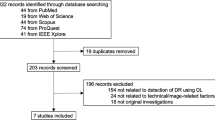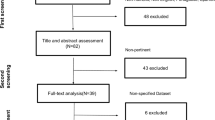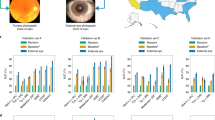Abstract
The US Department of Veterans Affairs has been acquiring store and forward digital diabetic retinopathy surveillance retinal fundus images for remote reading since 2007. There are 900+ retinal cameras at 756 acquisition sites. These images are manually read remotely at 134 sites. A total of 2.1 million studies have been performed in the teleretinal imaging program. The human workload for reading images is rapidly growing. It would be ideal to develop an automated computer algorithm that detects multiple eye diseases as this would help standardize interpretations and improve efficiency of the image readers. Deep learning algorithms for detection of diabetic retinopathy in retinal fundus photographs have been developed and there are needs for additional image data to validate this work. To further this research, the Atlanta VA Health Care System (VAHCS) has extracted 112,000 DICOM diabetic retinopathy surveillance images (13,000 studies) that can be subsequently used for the validation of automated algorithms. An extensive amount of associated clinical information was added to the DICOM header of each exported image to facilitate correlation of the image with the patient’s medical condition. The clinical information was saved as a JSON object and stored in a single Unlimited Text (VR = UT) DICOM data element. This paper describes the methodology used for this project and the results of applying this methodology.




Similar content being viewed by others
Notes
Corporate Data Warehouse (CDW), https://www.hsrd.research.va.gov/for_researchers/vinci/cdw.cfm
JSON (JavaScript Object Notation), https://www.json.org/
MUMPS, InterSystems Cachè Object Language, http://www.intersystems.com/
Compass™ v. 2.4.2, Laurel Bridge Software, Inc., http://www.laurelbridge.com/
DICOM Standard PS 3.25 Annex E Attribute Confidentiality Profile
eHMP – Enterprise Health Management Platform
References
Gulshan V, Peng L, et al: Development and validation of a deep learning algorithm for detection of diabetic retinopathy in retinal fundus photographs. JAMA, Published online November 29, 2016
Sayres R, et al: Assisted reads for diabetic retinopathy using a deep learning algorithm and integrated gradient explanation, Association for Research in Vision and Ophthalmology, 2018
Author information
Authors and Affiliations
Corresponding author
Appendices
Appendix 1 – Entity relationship diagram of data from CDW

Appendix 2 – JSON Example – Type 2 Diabetic with various A1C Lab Values

Appendix 3 – De-identified DICOM Header with unformatted JSON in Text Value (0040,A160)



Rights and permissions
About this article
Cite this article
Kuzmak, P., Demosthenes, C. & Maa, A. Exporting Diabetic Retinopathy Images from VA VistA Imaging for Research. J Digit Imaging 32, 832–840 (2019). https://doi.org/10.1007/s10278-018-0153-0
Published:
Issue Date:
DOI: https://doi.org/10.1007/s10278-018-0153-0




